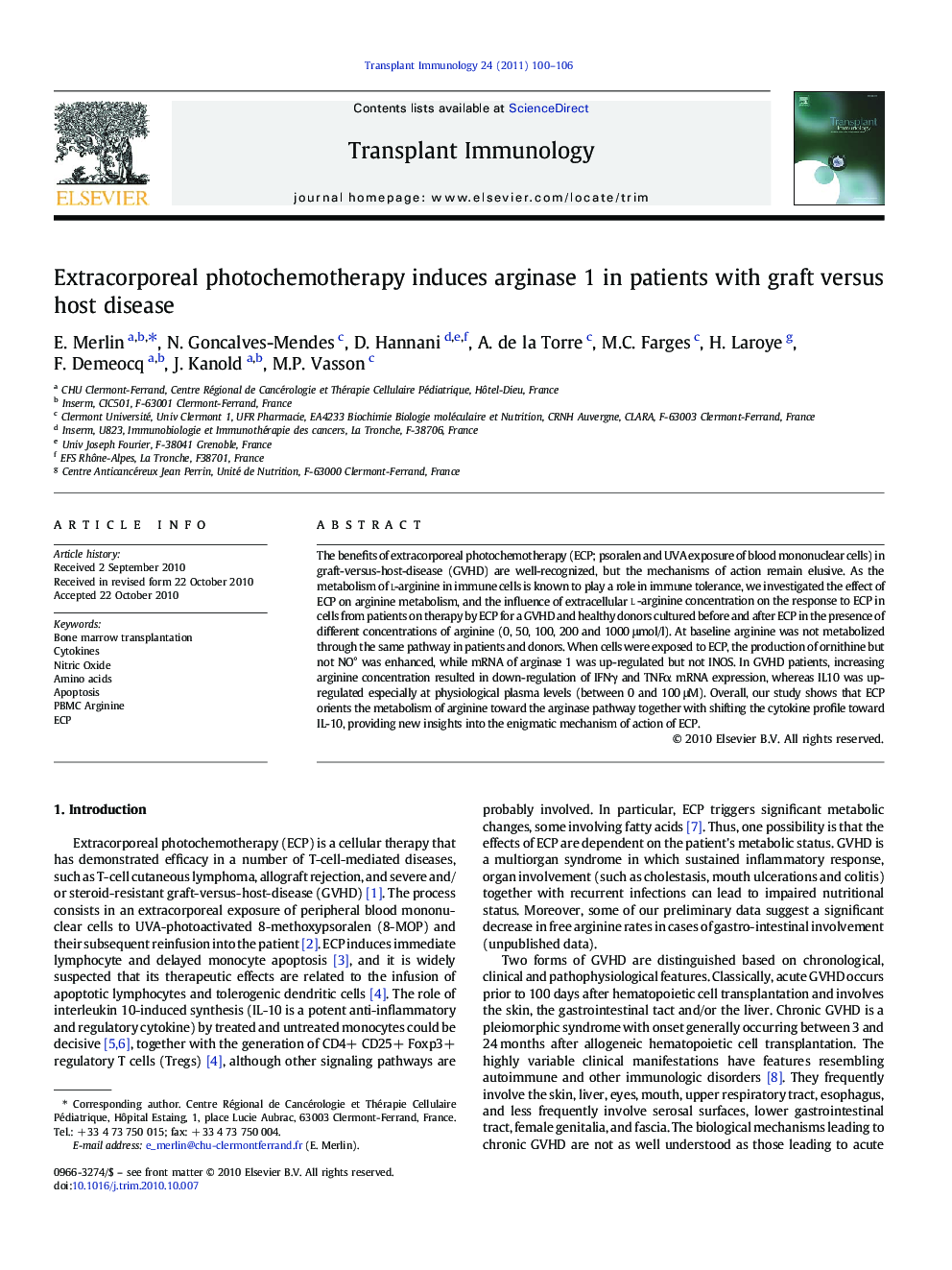| Article ID | Journal | Published Year | Pages | File Type |
|---|---|---|---|---|
| 6126105 | Transplant Immunology | 2011 | 7 Pages |
The benefits of extracorporeal photochemotherapy (ECP; psoralen and UVA exposure of blood mononuclear cells) in graft-versus-host-disease (GVHD) are well-recognized, but the mechanisms of action remain elusive. As the metabolism of l-arginine in immune cells is known to play a role in immune tolerance, we investigated the effect of ECP on arginine metabolism, and the influence of extracellular l -arginine concentration on the response to ECP in cells from patients on therapy by ECP for a GVHD and healthy donors cultured before and after ECP in the presence of different concentrations of arginine (0, 50, 100, 200 and 1000 μmol/l). At baseline arginine was not metabolized through the same pathway in patients and donors. When cells were exposed to ECP, the production of ornithine but not NO° was enhanced, while mRNA of arginase 1 was up-regulated but not INOS. In GVHD patients, increasing arginine concentration resulted in down-regulation of IFNγ and TNFα mRNA expression, whereas IL10 was up-regulated especially at physiological plasma levels (between 0 and 100 μM). Overall, our study shows that ECP orients the metabolism of arginine toward the arginase pathway together with shifting the cytokine profile toward IL-10, providing new insights into the enigmatic mechanism of action of ECP.
